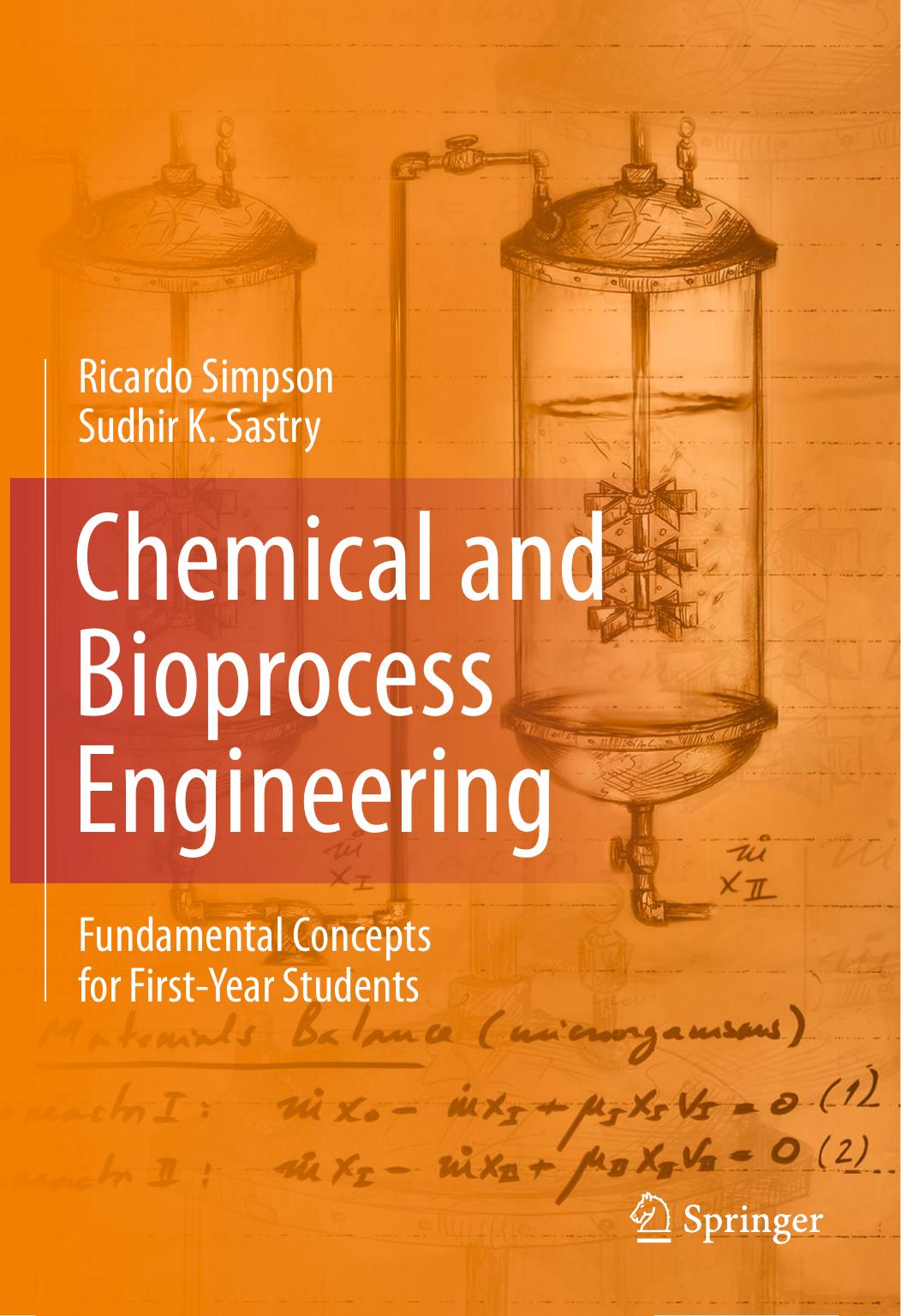Chemical and Bioprocess Engineering by Ricardo Simpson & Sudhir K. Sastry

Author:Ricardo Simpson & Sudhir K. Sastry
Language: eng
Format: epub, pdf
Publisher: Springer New York, New York, NY
(b)How many variables are in this process? NV = 9, and, given that there are no specified variables or any given relationship, NSV = 0 and NR = 0.
Step III
Analysis of degrees of freedom in process
Because the streams have three components, we can formulate three independent material balances. Recalling (7.13) we obtain:
(c) Determine the degrees of freedom of the process:
We have already answered all the questions and will stop here. In addition, we have no data to do any further calculations. But remember, you can specify six variables, but they must be independent of each other. We learned from example 5 that you cannot arbitrarily fix the three flow streams.
2. Separation process with a side stream [4]. Although it normally causes confusion, the concepts of side stream and bypass are clearly different. A bypass stream does not pass through a process, i.e., the stream “dodges" the process and is passed by the following process. A side stream, on the other hand, is divided into two streams, one part going through the process and the other being “bypassed” and then joining with the stream that was processed. A generic example of a side stream is presented in this exercise.
Like the previous exercise (three streams and three components per stream), this one includes a side stream, where part of the feed stream is “bypassed” to join one of the streams as it leaves the equipment. (a) Draw a schematic representation of this process. (b) How many variables are in this process? (c) Determine the degrees of freedom in this process.
Step I and II
Reading and understanding a flow diagram, variable definition and codification, and inclusion of all available data (a)Draw a schematic representation of this process.
As depicted in Fig. 7.26, we have included a mixer, as recommended in Sect. 7.8.2.1. Another interesting point for discussion is the relevance of including or not x A2, x B2, x A3, and x B3 as variables. When the feed stream is separated, the flow rate of each new stream is unknown, but their concentrations are exactly the same as that of the original stream; it is simply a division. Therefore, x A1 = x A2, x A1 = x A3, x B1 = x B2, and x B1 = x B3. If we consider them variables, then we need to include these four equations. Our advice is to not consider them variables and assume that they are already considered in x A1 and x B1.
Fig. 7.26Separation process with a side stream
Download
Chemical and Bioprocess Engineering by Ricardo Simpson & Sudhir K. Sastry.pdf
This site does not store any files on its server. We only index and link to content provided by other sites. Please contact the content providers to delete copyright contents if any and email us, we'll remove relevant links or contents immediately.
| Fluid Dynamics | Thermodynamics |
The Complete Stick Figure Physics Tutorials by Allen Sarah(7307)
Secrets of Antigravity Propulsion: Tesla, UFOs, and Classified Aerospace Technology by Ph.D. Paul A. Laviolette(5309)
Thing Explainer by Randall Munroe(3877)
The River of Consciousness by Oliver Sacks(3538)
The Order of Time by Carlo Rovelli(3145)
How To by Randall Munroe(3033)
A Brief History of Time by Stephen Hawking(2960)
I Live in the Future & Here's How It Works by Nick Bilton(2935)
The Great Unknown by Marcus du Sautoy(2646)
What If?: Serious Scientific Answers to Absurd Hypothetical Questions by Randall Munroe(2637)
Midnight in Chernobyl by Adam Higginbotham(2483)
Blockchain: Ultimate Step By Step Guide To Understanding Blockchain Technology, Bitcoin Creation, and the future of Money (Novice to Expert) by Keizer Söze(2445)
Networks: An Introduction by Newman Mark(2360)
The Meaning of it All by Richard Feynman(2300)
Easy Electronics by Charles Platt(2281)
The Tao of Physics by Fritjof Capra(2229)
Midnight in Chernobyl: The Untold Story of the World's Greatest Nuclear Disaster by Adam Higginbotham(2177)
When by Daniel H Pink(2082)
Introducing Relativity by Bruce Bassett(2076)
